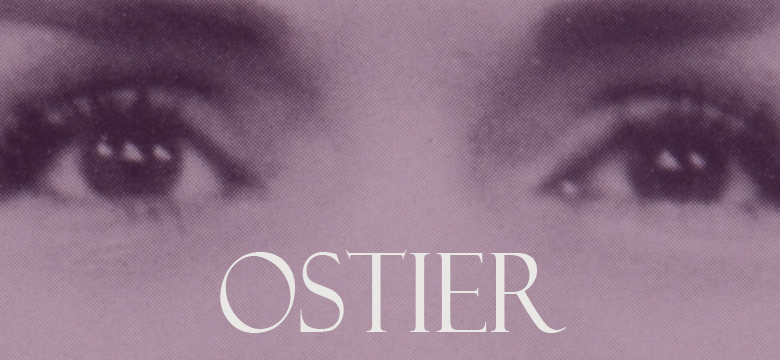
One of the many perks for working in the jewelry department is that I am fortunate to see many gorgeous pieces from the major names in the industry such as Cartier, Tiffany & Co., Van Cleef and Arpels, and others. However, for every sale, designers come across our desks who are not well-known today, and often very limited information on them can be found. Just such a name in our upcoming September auction spurred my interest, so I did a little investigation.
As you can see, the bracelet is signed “M. Ostier” for Marianne Ostier. Records showed that the Park-Bernet Galleries had auctioned off the entire inventory of Ostier, Inc. in 1969. This seemed strange since Ostier was one of New York’s leading jewelers for nearly three decades during the 20th century. As I came across images of many beautifully crafted pieces, I wondered where the brand went!? Why didn’t Ostier become a household name?
This is what I found out…
The New York based company was founded in the late 1930s, after Oliver Ostier, a third generation Austrian court jeweler, came to America following the Anschluss of 1938. His wife, Marianne, was the driving force behind the original designs. Born and educated in Vienna, Marianne showed incredible aptitude for music, painting and sculpture while attending the Vienna Academy of Arts and Crafts. After marrying Oliver, she began to apply her creative abilities to the field of jewelry. She is credited with numerous contributions to the world of jewelry, including the skinpin, the pincushion clip, and free-form jewelry, which was no doubt influenced by her background as a sculptor.
Marianne Ostier was the first life-time member elected to the Diamonds-International Academy; other accolades include the Diamond U.S.A. Award (which she won three consecutive years), and the Diamond International Award for design excellence.
The company closed in September of 1969 following the death of Oliver. Marianne quickly felt burdened by the increase in administrative duties after her husband’s death, and commented on the decision to close the business:
Today, for those familiar with the jewelry, Marianne Ostier is a name famed for original design and superb bespoke artistry, but to others, who just follow the jewelry giants, she will never be known. Marianne felt that she could no longer design for Ostier without artistic compromise, and it was her artistry that was the driving force behind the company’s name.
By Caroline Ervin




Very nice write up. Oliver was my father’s uncle. Marianne’s pieces were simple gorgeous. Thank you for sharing their story.
Agreed, a very nice writeup. Marianne was my Father’s sister. A very special person
Thank you for your comment, Mr. Anders.
While I agree that Marianne was a very talented designer, my father, Nathan Holz, was the sole jeweler who turned her ideals into real and beautiful pieces.
Nathan worked for Oliver and Marianne for 30 years and received very little notoriety for his efforts.
I recall with fondness the many times that my parents, my sister and myself traveled to Woodstock to stay with the Ostier’s their dog Flippy and their miniature donkeys.
Robert Holz
While I agree that Marianne was a very talented designer, her ideas were turned into actual jewelry by my father, Nathan Holz, who worked for Oliver and Marianne for over 30 years.
I recall with fondness the many visits my parents, sister and I spent in Woodstock where we played with Flippy their dog and their miniature donkeys.
Robert Holz